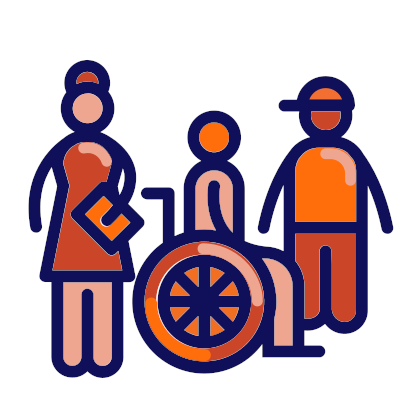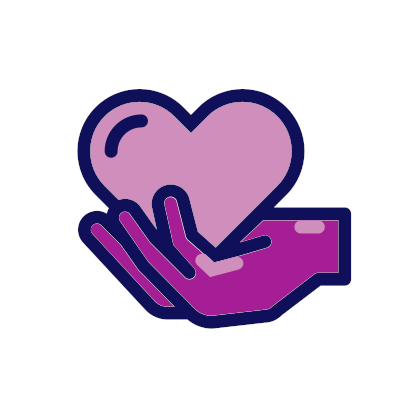Preventing bullying and violence

Schools can, and should, play a key role in tackling these abuses.
Whole-school anti-bullying programmes are needed, which promote peer support systems and involve active and well-trained teachers and parents, to foster a safe learning environment in which no violence is allowed.
Facts & figures
Half of the world’s students aged 13-15 say they have experienced violence in and around school.[1]
Nearly one in three students of this age say they have experienced bullying or been involved in fights.[2]
More than 700 million children have no legal protection from corporal punishment at school.[3]
What is violence and bullying?
Violence is the threatened or actual use of physical force or power resulting in physical or psychological harm to others.
Bullying is a form of violence. It can be defined as unwanted, aggressive behaviour which involves a real or perceived imbalance of power. It is behaviour that is repeated, or carries the threat of being repeated over time.
Bullying takes different forms in school, including:
- Physical, e.g., hitting, kicking, slapping, shoving, hair-pulling, etc.
- Verbal, e.g., name-calling, teasing, using belittling expressions, etc.
- Relational, e.g., ostracising, spreading rumours, social manipulation, etc.
- Sexual, e.g., sexual name-calling, uninvited touching, propositioning, etc.
Cyberbullying is a distinctive form of bullying. It differs from other types on account of the constant risk of public exposure, the complex roles of observers and the size of the audience that comes with digital technologies.[4].
Bullying is not the only form of student-on-student violence in schools, however. Fights between, and attacks on students associated with gang culture and the carrying of weapons, especially knives, are becoming an increasing problem in various countries.
Why is addressing violence and bullying important at school?
Under the U.N. Convention on the Rights of the Child, schools have a formal duty to protect children from all forms of violence, both physical and psychological.
“Parties shall take all appropriate legislative, administrative, social and educational measures to protect the child from all forms of physical or mental violence, injury or abuse, neglect or negligent treatment, maltreatment or exploitation, including sexual abuse, while in the care of parent(s), legal guardian(s) or any other person who has the care of the child.”[5]
Failure to protect children at school can have harmful repercussions on their future lives, both educationally and socially - whether they be victims, perpetrators or bystanders.
Students who are bullied are more likely to suffer from depression and anxiety, health issues, poor academic achievement and behaviour problems at school, including higher drop-out rates. A small number may also retaliate in violent ways. Students who bully others are more likely to exhibit other behaviour problems at school and to suffer from alcohol or drug abuse, and to engage in criminal activity and abusive relationships in adulthood. Children who witness bullying and violence are also more likely to have mental health difficulties and miss or drop out from school.
Violence and bullying not only affects academic learning, it also impacts negatively on the social development of young people. In particular, students who experience violence and bullying are more likely to have difficulty developing basic democratic competences, such as empathy, respect for others, openness to other cultures and beliefs, tolerance of ambiguity and self-efficacy – all of which lie at the heart of the Council of Europe Reference Framework of Competences for Democratic Culture.
The effects of violence and bullying are not limited only to the students directly involved, but potentially impact on everyone at a school. Unchecked, incidents of violence and bullying lead to an atmosphere of anxiety and insecurity incompatible with learning. They also lead to, or exacerbate conflicts beyond the school gates, which in turn have further consequences for relations within the school.
What are the challenges?
Violence and bullying can be challenging to deal with at school. What is regarded as bullying or violence is sometimes thought of as a matter of subjective opinion. It can be difficult to build a common approach to eradicating from school something which a significant proportion of staff believes not to exist or is not important to them.
The prevailing culture in a school can sometimes work against attempts to reduce violence in its different forms. Rule by fear, over-emphasis on punishment and the prioritization of learning environments which support competitive behaviour all militate against the prevention of violence and bullying. So, too, does the holding of an ideology which accepts violence as a valid response in situations of fear, stress or frustration – as evidenced in the advice commonly given to victims of bullying to fight back and give the bully a ‘taste of their own medicine.’
In such circumstances it can be easy to think that dealing with violence and bullying is simply a matter of stopping fights, giving punishments and imposing order, rather than questioning the wider culture of the school, the examples it sets and the sorts of behaviour it supports.
Many teachers are unaware of democratic approaches of dealing with violence and bullying, such as:
- restorative justice
- conflict resolution
- peer mediation.
Such approaches are not only arguably more effective than punitive ones, but also have the advantage of promoting democratic values and attitudes more widely across a school.
Such approaches take time to learn, however, and require the development of specific types of skills, knowledge and attitudes. They also take time to put into practice. It can be difficult for a teacher to find the time and motivation to deal with violence and bullying in a democratic and constructive way. It is easier just to punish the supposed perpetrator, and easier still to pass the perpetrator up the school hierarchy for a more senior member of staff to punish.
A further challenge in recent years has been the rise of gang culture among young people and the carrying of weapons, especially knives, in as well as out of school. This has led to a rise in the number of serious acts of violence between students and also to the more regular involvement of the police in school affairs, both of which demand new professional skills and ways of working from teachers and school leaders.
How can schools get active?
Taking action on violence and bullying is not just a matter of finding better ways of responding to incidents after they have occurred – though this is important, but also of creating the kind of school environment in which violent incidents are less likely to happen in the first place.
A good place to start is with asking students to review the current situation in their school:
- where they feel vulnerable or in danger
- where they feel safe
- what sorts of violence they have witnessed or experienced
- what they see as the causes of these sorts of violence
- how effective they think the school is at dealing with violence
- what further measures they would like the school to take.
Surveying student opinion provides a good evidence base for targeting measures to prevent violence, e.g., increasing supervision in areas in school where students are fearful of going, creating more opportunities for constructive play during breaks from lessons, etc.
It can also stimulate a whole-school conversation about violence and bullying. Such a conversation is important for arriving at a whole-school policy that everyone can support. It is an opportunity to develop a common language and understanding of what constitutes violence and bullying in school and shared rules on how to approach it, including the reporting and monitoring of incidents. This is why it is essential that the voices of all school stakeholders are heard in the process of policy-development: principals, teachers, students, parents and the local community.
The conversation should also include the opportunity for teachers to reflect on practices that lead to frustration and low self-esteem among students, such as an over-emphasis on competition, over-frequent assessment and unreasonably high expectations of academic attainment. Attention should be given instead to creating a school environment which encourages inclusion and co-operation, and the valuing of individual differences and diversity.
Reflection on current practice goes hand in hand with the provision of opportunities for school staff to develop new skills. The ability to recognise violence in all its forms and to be able to deal with it appropriately are important professional skills for any adult involved in school life.
As young people themselves are often the most effective agents for change in a school, it is important they should be involved in formal initiatives to reduce violence and bullying, such as peer mediation schemes. Such schemes are most effective when taken seriously by both staff and the students involved, for example, by instituting formal recruitment procedures for student mediators and opportunities for high-level training from someone with the appropriate professional expertise.
Initiatives of this kind can be supported in the classroom by making time in the curriculum to talk with students about issues of violence and bullying. It should include discussions about the psychology of bullying, the effects of peer pressure and the influence of social media on young people’s behaviour.
[1] UNICEF Report, September 2018
[4] de Morais & Fernandes, 2017. ‘When bullying crossleakes the screen’. In J. Richardson, E. Milovidov & R. Blamire (Eds.), Bullying: Perspectives, Practices and Insights (pp. 11-16). Strasbourg, France: Council of Europe.
 Resources on Preventing violence and bullying
Resources on Preventing violence and bullying
 Related schools projects
Related schools projects
Address: Proin Stratopedo StrempeniotI, 56701 Neapoli, Thessaloniki
Country: Greece
Project: Our voice is our power!
 Working language during the project:
Working language during the project:
- Greek
- English
 Themes of the Council of Europe campaign “FREE to SPEAK, SAFE to LEARN - Democratic Schools for All” covered:
Themes of the Council of Europe campaign “FREE to SPEAK, SAFE to LEARN - Democratic Schools for All” covered:
- Making children’s and students’ voices heard
- Addressing controversial issues
- Preventing violence and bullying
- Tackling discrimination
- Improving well-being at school
 Competences from the Reference Framework of Competences for Democratic Culture (CDC) addressed and where / how they were integrated:
Competences from the Reference Framework of Competences for Democratic Culture (CDC) addressed and where / how they were integrated:
- Co-operation skills
Activities and creation of educational material. - Respect
Activities and creation of educational material [eg a radio show that was broadcast by a Greek national radio station (ERT3]) . - Knowledge and critical understanding of the world:politics, law, human rights, culture, cultures, religions, history, media, economies, environment, sustainability
Activities and creation of videos and other educational material about human rights (anti-bullying), culture, cultures and history (Europe and other countries), environment.
 Target group age range:
Target group age range:
- 15-19
 Level of education:
Level of education:
- Upper secondary education
Short description of the project:
This project focuses on the idea of active citizens in the European Union which was implemented in a Senior High School during the school year 2017-2018, within the framework of the "Ambassador School Programme", "Teachers 4 Europe" and eTwinning programmes. Two teachers of different specializations collaborated with students from all grades in order to foster their competences for democratic culture and become active citizens on themes such as human rights, democracy and environment. With the help of experiential techniques and technology, and with the motivation of some older videos and sites/blogs that the two teachers have created in previous years with their older students, they created some new videos, a radio show that was broadcast by a Greek national radio station, some new sites/blogs and other educational material.
 Aims/objectives
Aims/objectives
Τhis project aimed to familiarise pupils with the European Union and the concept of active citizens in the European Union. It invited students and teachers to reflect on current problems (human rights, refugees, environmental problems, bullying, democratic & digital citizenship etc.) and act upon them as active citizens. Moreover, it created opportunities for social interaction of young people by fostering dialogue among students from different countries and developing a mutual understanding.
 Expected results/outcomes
Expected results/outcomes
During the evaluation of the practice, the teachers observed that students: a) managed to successfully process and reformulate the information provided through the project, b) developed their decision-making ability, c) became familiar with modern technology, d) reinforced their active involvement.
The knowledge provided during the activity was related to real life, the protagonists being the students themselves: without their involvement, nothing could be accomplished, and no educational goal could be reached. Both the teachers and the students embraced different ways of perceiving and interpreting reality and committed themselves to using them. More particularly, the students were asked to talk about respect, religious notions and European values and to demonstrate what they can actually do with all they have learned, through their own work.
The project focused on active citizenship, migration, human rights, awareness of policies for migration, cultivating the interdisciplinary spirit among students and teachers, collaboration and resilience and learning the values of respect. The students discussed, criticized, became aware of the current situation and realized that we have to work together for a free, socially just and democratic Europe of the future that places its respect on the environment and humanity as its main priority.
 Changes
Changes
Both the teachers and the students adopted such an attitude that enabled them to view the world in various different ways: to describe it, to interpret it, to check it, to experience it, to analyse it, to depict it, to reenact it. And all this was done in more ways than one, using various “languages”.
Acquired skills: educational material study, digital literacy, inclusion, cultivated empathy through activities, engaged problem solving, critical thinking, improved language skills and international collaboration, encouragement of interest in science, performance–based assessments.
 Challenges you faced
Challenges you faced
The challenges that we faced were to enhance the understanding of students for the important role they play in interpreting the diversity of the "other" through a holistic approach of diversity through research, promotion and study of personal experiences, needs and desires of the students themselves.
As far as our school is concerned, the students were accepted after taking and passing a special examination or currently at random (with a draw) and, therefore, they do not necessarily come from the area around the school, but from various municipal districts. At the very beginning of the school year, an attempt has been made to detect and accommodate the various student learning styles by taking into account the students’ extracurricular activities.
Moreover, we have tried to cultivate European consciousness and identity through the active participation of pupils on European platforms and the empowerment of European values and the acquaintance with the religious, cultural and geographical diversity of Europe and the contact of students with its arts and culture, so that Europe can take a more meaningful approach, especially in the difficult times we are experiencing with fanaticism, nationalism and homogenization.
Finally, an attempt was made to exploit the pre-existing knowledge of pupils. The research hypothesis was that students would be better met in a familiar and popular interface (digital maps) and would feel closer to the new information and European values. Cartographer-students were asked to reconfigure the religious and cultural past of the people of Europe and link it to today.
 Time-frame of the project:
Time-frame of the project:
During the school year 2017-2018 (some parts were created during the school years 2015-16 and 2016-17 and were used as educational material for the school year 2017-18)
 Council of Europe materials on citizenship and human rights education used while preparing or implementing your practice:
Council of Europe materials on citizenship and human rights education used while preparing or implementing your practice:
- Reference Framework of Competences for Democratic Culture
- Living Democracy - manuals for teachers
- Addressing violence in schools through EDC/HRE
- All Different – All Equal
- Managing controversy
- Teaching controversial issues-training pack
- Compass
- Compasito
- Human Rights and Democracy Start with Us – Charter for All
- Freedom(s) - Learning activities for secondary schools on the case law of the European
- How all Teachers Can Support EDC/HRE: A Framework for the Development of Competences
- Multimedia Material (ex. video “Beat Bullying”, series of cartoons “Democracy and Human Rights at School”, video “Corporal punishment at school: how two parents decided to change things”)







